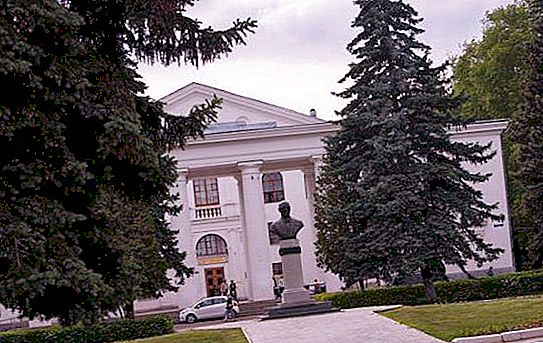The modern world is huge, but cramped. The realities of our life are such that the existence of a person outside the framework of culture is almost unthinkable, as is the isolation of a single culture. Today, in an era of opportunities, information and tremendous speed, the topic of interpenetration and dialogue of cultures is more relevant than ever.
Where did the term "culture" come from?
Since Cicero applied this concept to a person in the 1st century BC, the term "culture" has been expanding, acquiring new semantic nuances and capturing new concepts.
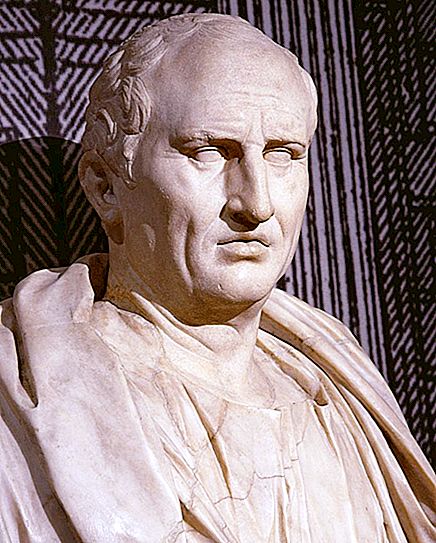
Initially, the Latin term colere meant soil. Later, it spread to everything related to agriculture. In ancient Greece there was a special concept - "paideia", the meaning of which in the general sense can be conveyed as "the culture of the soul." Marc Porzius Cato Sr. was the first to combine paideia and culture in his treatise De Agri Culrura.
He wrote not only about the rules of cultivating the land, plants and caring for them, but also that farming should be approached with a soul. Agriculture, built on a soulless approach, will never be successful.
In ancient Rome, this term was used not only in relation to agricultural work, but also to other concepts - the culture of the language or the culture of behavior at the table.
For the first time in history, in the Tusculan Conversations, Cicero used this term in relation to a single individual, combining in the concept of "soul culture" all the properties that characterize a well-educated person who has an understanding of science and philosophy.
What is a culture?
In modern cultural studies, the term "culture" has many different definitions, the number of which in the 90s of the last century exceeded 500. Within the framework of one article it is impossible to consider all the meanings, so we will focus on the most important.
First of all, this term is still closely connected with agriculture and agriculture, which is reflected in such concepts as "agricultural culture", "garden culture", "cultivated fields" and many others.
On the other hand, the definition of "culture" often denotes the spiritual, moral qualities of an individual person.
In the everyday sense, the term is often referred to as works of literature, music, sculpture and the rest of the heritage of mankind, designed to educate and develop a personality within a single society.
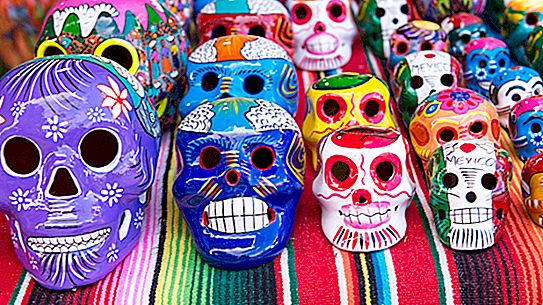
One of the most important definitions is the understanding of "culture" as a kind of community of people - "culture of India", "culture of Ancient Russia." It is this third concept that we will consider today.
Culture in Sociology
Modern sociology considers culture as an established system of values, norms and orders governing the life of people in a particular society.
Initially, cultural values are artificially created by society, later society itself falls under the influence of its norms and develops in the corresponding direction. It turns out that a person becomes dependent on what he created.
In the context of culture as a special system that regulates life in a particular society, there is the concept of the interaction of cultures.
A single culture in the world of cultures
The universal culture in terms of its internal structure is heterogeneous. It breaks up into many different cultures, which are characterized by national characteristics.
That is why, speaking of culture, we are forced to clarify which one we mean - Russian, German, Japanese, and so on. They are distinguished by their heritage, customs, rituals, stereotypes, tastes and needs.
The interaction of cultures in the modern world takes place in accordance with various schemes: one can absorb or assimilate the other, a weaker one, or both of them can be modified under the pressure of globalization processes.
Isolation and dialogue
Any culture, before entering into one of the forms of interaction, was in isolation at the very initial stages of its development. The longer this isolation lasted, the more characteristic a particular culture acquired an individual culture. A striking example of such a society is Japan, which for a long time developed quite apart.
It is logical to assume that the earlier the dialogue of cultures takes place, and the closer it goes on, the more national features are erased, and cultures come to a common denominator - a kind of averaged cultural type. A typical example of such a phenomenon is Europe, where the cultural boundaries between representatives of various societies are quite blurred.
However, any isolation is ultimately a dead end, since existence and development is impossible without the interaction of cultures. Only in this way, communicating, sharing experience and traditions, accepting and giving, can society reach incredible heights of development.
There are various models of the interaction of cultures - contact can occur at the ethnic, national and civilizational levels. This dialogue can lead to various results, from total assimilation to genocide.
The first stage of intercultural contact
Ethnic is the very first, basic level of interaction of cultures. Cultural interaction takes place between completely different human societies - it can be tiny ethnic groups, barely numbering a hundred people, and peoples, whose number is more than a billion.
At the same time, a certain duality of the process is noted - on the one hand, the interaction of cultures enriches and saturates each individual community. On the other hand, more united, small and homogeneous peoples usually seek to protect their individuality and identity.
Different processes of interaction of cultures of the world often lead to different results. It can be a process of unification and a process of separation of ethnic groups. The first group includes such phenomena as assimilation, integration, and the second - transculture, genocide and segregation.
Assimilation
Assimilation is said when one or both interacting cultures lose their individuality by building a new model of society based on shared, averaged values and norms. Assimilation can be both natural and artificial.

The second takes place in societies where state policy is aimed at dissolving small ethnic groups in the culture of large nations. Very often, such violent measures lead to directly opposite results, and instead of assimilation, hostility arises, which can lead to increased ethnic conflicts.
One-sided assimilation is distinguished when a smaller nation accepts the customs, traditions and norms of a large ethnic group; cultural mixing, which implies a change in both ethnic groups and building a new model of society based on a combination of two or more types of cultures, and complete assimilation, which implies the rejection of the cultural heritage of all interacting parties and the creation of an original artificial community.
Integration
Integration is an example of the interaction of cultures that differ significantly in language and traditions, but are forced to exist on the same territory. As a rule, as a result of prolonged contact, two ethnic groups form common features and cultural principles. Moreover, each nation retains its originality and originality.
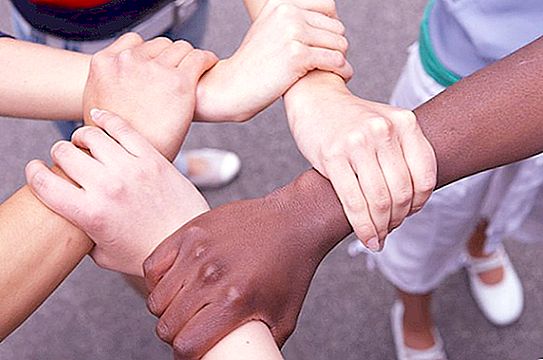
Integration can be:
- Thematic. When nations unite on the basis of similarity of views. An example of such interaction is the unification of Europe on the basis of common Christian values.
- Stylistic. Living in one place, at one time, and under the same conditions, sooner or later form common cultural views for all ethnic groups.
- Regulatory. Such integration is artificial and is used to prevent or reduce social tensions and cultural and political conflicts.
- Logical. It is based on the harmonization and adjustment of scientific and philosophical views of various cultures.
- Adaptive. This modern model of interaction is needed to increase the effectiveness of each culture and individual people as part of their existence in the world community.
Transculture at the heart of a new society
It often happens that as a result of voluntary or forced migration, part of the ethnic community finds itself in an environment alien to it, completely cut off from its roots.
On the basis of such communities, new societies arise and form, combining both historical features and new ones, developed on the basis of experience gained in alien conditions of stay. So, the British Protestant colonists created, having moved to North America, a special culture and society.
Genocide
Experience in the interaction of different cultures can not always be positive. Hostile ethnic groups that are not inclined to dialogue can often organize genocide as a result of propaganda.

Genocide is a destructive type of interaction between cultures, the deliberate complete or partial destruction of members of one ethnic, religious, national or racial group of people. To achieve this goal, completely different methods can be used - from the intentional killing of community members to the creation of intolerable living conditions.
Nations that organize genocide can remove children from families in order to integrate into their cultural community, destroy them, or interfere with childbearing in a persecuted cultural and ethnic community.
Today, genocide is an international crime.
Segregation
The peculiarity of the interaction of cultures during segregation is that part of the population - it may be an ethnic, religious or racial group - is forcibly separated from the rest of the population.
This may be a state policy aimed at discriminating against certain groups of the population, however, due to the success of human rights defenders of the second half of the 20th century, legal segregation and apartheid are practically not found in the modern world.
This does not negate the actual existence of segregation in those countries where it previously existed de jure (by law). A striking example of such a policy is racial segregation in the United States of America, which has existed for two hundred years.
National level of cultural interaction
The second step after ethnic interaction is national contact. It appears on the basis of already established ethnic relationships.
National unity arises where various ethnic groups are united in one state. Through the conduct of a common economy, state policy, a single state language, norms and customs, a certain level of commonality and similarity of interests is achieved. However, in real states such ideal relations do not always arise - often in response to state measures of integration or assimilation, people respond with outbreaks of nationalism and genocide.
Civilization as a universal form of interaction
The highest stage of intercultural interaction is the civilizational level, at which many civilizations unite in communities, which allow regulating relations both within the community and in the interstate arena.
A similar type of interaction is characteristic of modernity, where peace, negotiations and the search for common, most effective forms of interaction are the basis of existence.
One example of inter-civilizational interaction is the European Union and its European Parliament, designed to solve the problems of the interaction of cultures among themselves and with the outside world.
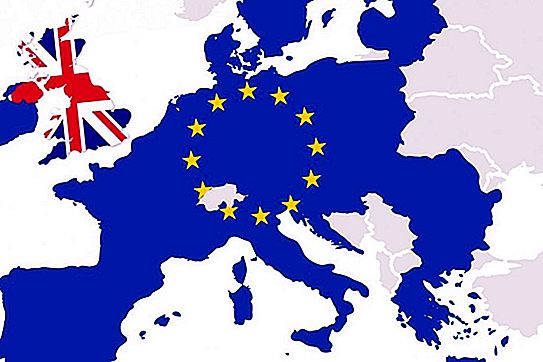
Civilization conflicts can occur at different levels: from the micro level with its struggle for power and territory, to the macro level - in the form of a confrontation between powers for the right to own modern weapons or for dominance and monopoly on the world market.
East and West
At first glance, nature has nothing to do with culture, because this term means human heritage, something created by human hands and completely opposite to its natural origin.
In fact, this is a rather superficial look at the state of things in the world. The interaction of nature and culture depends on what kind of culture comes into contact, since there is a huge gap in the views and principles between the eastern and western world.
So, for a man of the West - a Christian - domination over nature, its subordination and the use of its resources for its own good, are characteristic. Such an approach runs counter to the principles of Hinduism, Buddhism or Islam. People of eastern upbringing and religion are characterized by worship of the power of nature and its deification.
Nature is the mother of culture
Man came out of nature and through his actions changed it, adjusted to his needs, creating a culture. However, their relationship has not completely lost, they continue to influence each other.
The interaction of nature and culture, according to sociobiologists, is only part of the general evolutionary processes, and not a single phenomenon. Culture, from this point of view, is only a stage in the development of nature.

Thus, animals, evolving, change their morphology to adapt to the environment and transmit it through instincts. Man chose another mechanism, creating an artificial environment, he transfers all the accumulated experience to future generations through culture.
However, nature was and is a factor determining the formation of culture, since human life is inseparable from it and proceeds in close interaction. Thus, nature through its images inspires man to create literary and artistic masterpieces, which are a cultural heritage.
The environment affects the conditions of work and rest, the mentality and perception of peoples, which, in turn, is directly related to their culture. The constant change in the world around us encourages people to look for new ways to meet their needs. At the same time, he finds all the materials necessary for this in nature.



